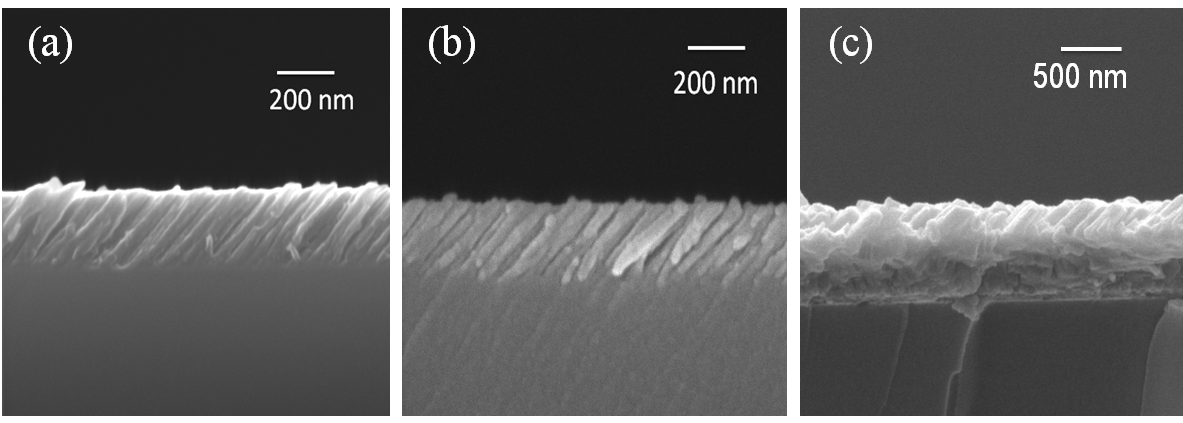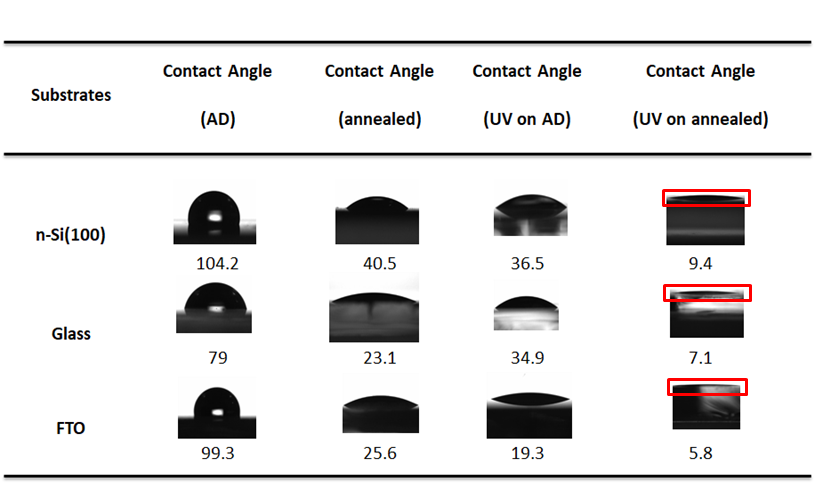Structural properties and wettability of TiO2 Nanorods
Gaurav Shukla, Chandan Kumar and S. Angappane, physica status solidi (b), (2019) 1900032;DOI: 10.1002/pssb.201900032
Cross-section view of the AD film on the substrates (a) Si, (b) Glass, and (c) FTO.
Contact angles for as deposited, annealed and UV exposed TiO2 samples.
We study the structural and wetting properties of as deposited, annealed and UV exposed TiO2 slanted nanorods grown on different substrates. The slanted nanorods of 250 nm thickness were deposited on Si, FTO, and glass at 80° glancing angle deposition (GLAD) by employing e-beam evaporation. The structural evolution shows that the prior seeding on the substrate affects the morphology dramatically, while a plane substrate can be tuned by different angle of deposition for interesting morphologies by GLAD technique. Annealing and UV exposure redefined the grown material and changes the structural and wetting behaviour of the TiO2 films. Notably, annealing the sample for 1 hour has decreased the contact angle and all the annealed samples became hydrophilic. Further, the UV radiation exposure has made all the samples super hydrophilic. We have demonstrated that by choosing an appropriate substrate, we can achieve controlled properties of our interest with or without external stimuli. Nevertheless, these samples would find interesting applications in self-cleaning, photo catalysis, gas sensing, antireflection coating etc.


